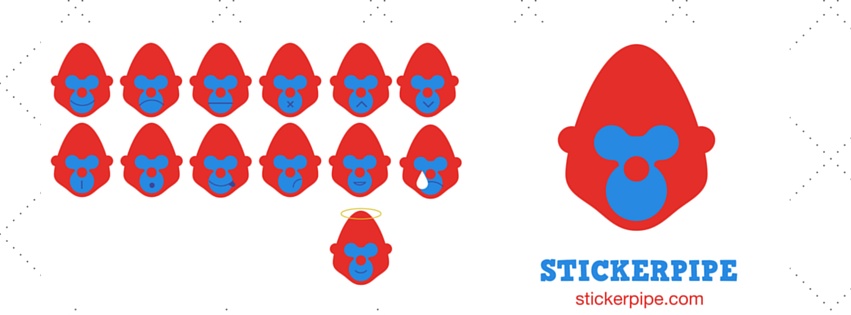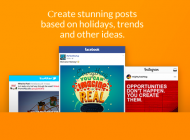Have you ever sent stickers in messengers? I do it, occasionally.
Have you ever bought one? I haven’t.
Neither had Andrey Horsev, the CEO and co-founder of 908, nor he had ever downloaded a single ringtone into his phone.
I must say that I admire entrepreneurs seeing business opportunities in market niches where they aren’t a part of the target audience.
But first things first.
908: startup lab
Being an experimentalist to the backbone, Andrey likes to compare 908 to a lab. Even when the company made a living by doing outsourced product development, they had one day a week dedicated to their own projects-experiments.
That’s how Audiko, a service for creating ringtones with more than 15 million Android installs, and a million dollar in revenue, was born in 2008. But it came to the market when the ringtone era was soon to fade, so 908 set up to catch the sticker wave.
Their new “experiment” is StickerPipe, an SDK enabling chat platforms to quickly and easily integrate stickers. It is free and compatible with iOS, Android, and Web.
Recently people have been calling less and texting more. Businesses, including e-commerce and banking industry, are implementing chats in their interfaces. When we are all busy, messaging is perceived as a less intrusive way of communication, even if sometimes it’s quicker to call than to express your thoughts in writing (stickers are helping, though).
The target market for StickerPipe is basically any service or platform that uses messengers for communication – user-to-user, or business-to-user. So, these are regular messengers, multiplayer online games, dating websites, chats in e-commerce. For them, stickers, with premium packs available, are a way to monetize chat traffic or to connect with users on a deeper level. For users, stickers are a medium for transmitting emotions in messages. According to Horsev, “stickers are fast-moving digital goods with huge potential”. Since they are emotional, and emotions change and evolve, have nuances, users will always need new content to express them.
Market validation
Before a single line of StickerPipe code was written, 908 had already the business case validated by early adopters: several chat platforms were eager to tap into this opportunity and offer their users the sticker experience. One of the biggest partners to integrate StickerPipet SDK is QuickBlox, a back-end cloud messaging and calling solution powering more than 20,000 apps and such corporate clients as Barclays, BlackBerry, eBay, Unilever. (Editor’s note: QuickBlox is a Ukraine-born company started in 2011 by Taras and Dmytro Filatov.)
908 started the development of StickerPipe less than a year ago, and they already can boast some stats on the local market. When a Ukrainian e-commerce platform with internal chat (20K messages/day) first integrated with StickerPipe marketplace, one in 20 messages was a sticker. Quickly, this ratio ramped up to one to four.
StiKey and Imoji are competing providers of sticker SDKs, but their content is delivered via keyboard, which is not always easy to send. For instance, to send one of the keyboard stickers on iOS, the user has to copy the image first, then to paste it in the message. On the contrary, StickerPipe aims for seamless integration with messengers, just like sticker markets in Viber or in LINE.
If you are a newbie to the industry of cheap virtual goods, here’s some interesting data. In May 2014 LINE, a messaging and calling app with over 200 million monthly active users (mainly in Japan, Taiwan, and Thailand) had released LINE Creators Market, an integrated marketplace where artists could sell their stickers to other users. As followed from a report a year later, 390.000 creators joined the platform, and the revenue from stickers sale reached $75M, with most popular sticker sets earning about $421K.
Monetization and investment
StickerPipe will have free stickers, and premium content provided by artists. The revenue will be shared between the artist, the owner of the messaging platform and 908 itself. However, in the beginning all the content will be free to expand the SDK’s adoption.
Answering my questions about the investment plans, Andrey told that StickerPipe was a classic bootstrapping startup, but they will be considering attracting “smart money” when they have all the trumps in their hands: integrations, traction, statistics.
Thoughts from the editor
Brands are increasingly looking for new smart ways to connect to their audiences by tapping into their emotions. Promotion with stickers is already used by some brands and celebrities, and it is likely to become an integral part of many brand strategies any time soon. 908 could open a sticker marketing consulting outfit which would capitalize on the data gathered on StickerPipe platform and provide business with expertise and insights on best-performing stickers.
















